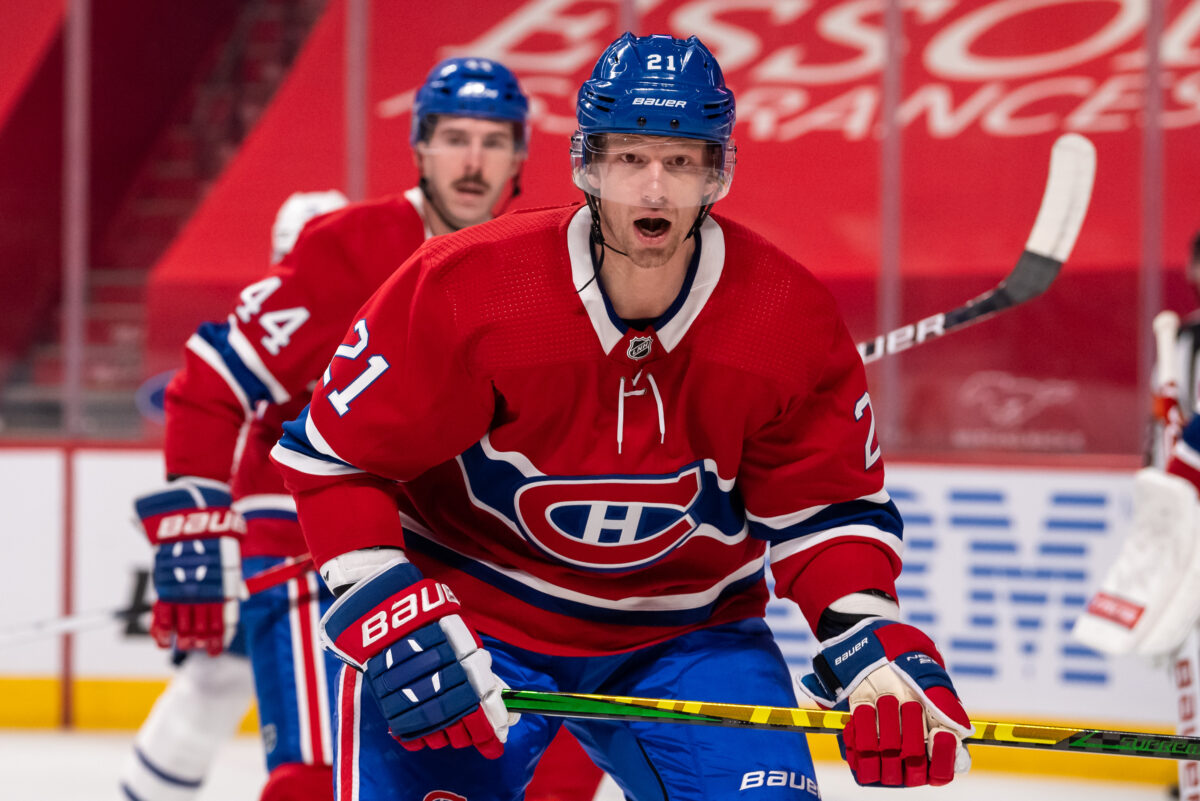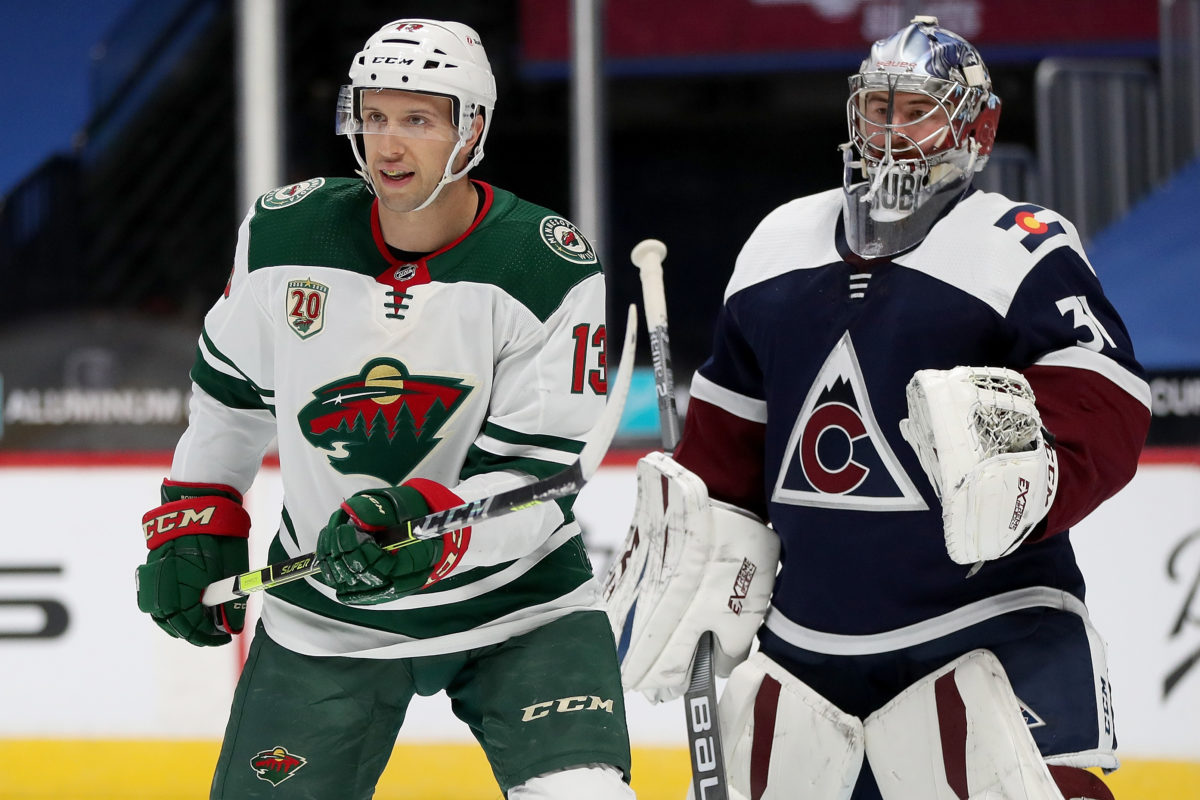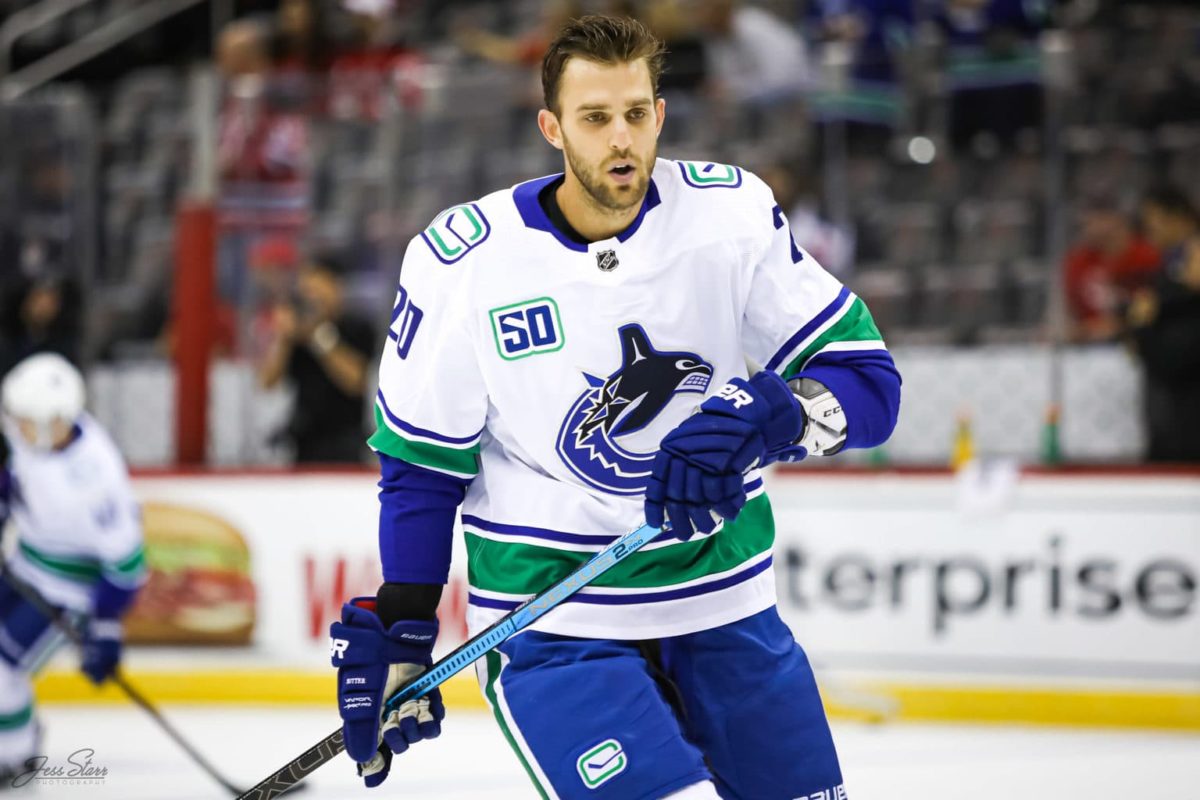After another disappointing season that saw the Vancouver Canucks miss the playoffs for the fifth time in eight seasons, change is on the horizon yet again. With Brandon Sutter finally becoming a free agent after completing a pricey five-year $21.875 million contract, they will be on the hunt for a center that can kill penalties and hopefully anchor a third line that can score some goals.
Related: Canucks Have 3 Skilled Veterans to Target in Free Agency
Even though Sutter has expressed interest in remaining with the Canucks, general manager Jim Benning should not entertain that notion, especially if he’s signed to continue on as his third-line center (from “Canucks: Healthy UFA Brandon Sutter wants to stay but is also drawing trade buzz”, The Province, 2/28/21). Apart from re-signing Quinn Hughes and Elias Pettersson to reasonable contracts, building a third wave of attack should be high on his list of priorities this offseason. Whether it be through free agency or trade, he needs to find someone more offensively-inclined than Sutter to man his third unit.
So without further ado, here are five free agent centers that could fit the bill, proven veterans and low-risk, high-reward options alike.
Eric Staal
If the Canucks are looking for a third-line center that can score, they should look no further than 36-year-old veteran Eric Staal. He may not be the elite forward he was back in the 2000s, but he has proven that he can still produce when he puts his mind to it. Not far removed from a season that saw him score 42 goals and 76 points, he might be the perfect depth center to make the bottom-six dangerous again.
If the recently-signed Vasily Podkolzin teams up with Bo Horvat and Nils Hoglander on the second line, Staal could line up beside another veteran in Tanner Pearson to provide another wave of attack beyond the top-six. He has also proven to be a solid play driver with a career 52.4 Corsi-for percentage (CF%) and a pretty decent faceoff man with a career 49.1 percent success rate. He would also make the second power play unit more dangerous, which is something the Canucks have not had since their President’s Trophy days.

Similar to Joe Thornton and Jason Spezza, Staal probably won’t be looking to sign any long-term contracts, so the Canucks should be able to sign him to a relatively cheap one-year deal. Like Tomas Vanek before him, the Canucks would benefit from his veteran leadership and at the very least, would be able to trade him at the deadline if they are on the cusp of missing the playoffs.
Nick Bonino
Since the Canucks traded Nick Bonino to the Pittsburgh Penguins, he has been an integral part of two Stanley Cup-winning teams and has transformed himself into a reliable two-way pivot. At this point in his career, he’s basically a more productive, less injury-prone version of Sutter, the forward he was traded away for. His faceoff percentage hasn’t dropped below 50 percent since the 2016-17 season and he’s been pretty consistent offensively, scoring more than 12 goals in all but one of his campaigns since leaving the Canucks.
The last time Bonino suited up for the Canucks, he was miscast as a second-line center. Now with Horvat firmly entrenched in that role, he can go about his business on the third line providing 15-20 goals without the pressure of top-six expectations. He could also anchor the second unit powerplay and fill Sutter’s role on the penalty kill.

Bonino might not have the same goal-scoring potential that Staal has, but if the Canucks are looking for a solid replacement for Sutter, Bonino definitely fits the bill. He won’t come as cheap, but given his age, he likely won’t be able to demand the same money he got during the 2017 offseason when he signed with the Nashville Predators for a premium $4.1 million in average annual value (AAV). However, if he does end up asking for that type of coin, Benning should walk quickly in the other direction and look at more budget-friendly options.
Phillip Danault
On a team now full of young talent down the middle, Phillip Danault has been relegated to the role of matchup center for the upstart Montreal Canadiens. Deployed against the likes of Auston Matthews, Connor McDavid, and Mark Scheifele night in and night out, he has turned into one of the NHL’s premier shutdown forwards. With his speed, relentless forechecking and backchecking, and ability to score goals, he has become a solid two-way forward capable of not only shutting down the best in the game but providing offence as well. He is also a friend of the fancy stats and a monster in the faceoff circle, boasting a ridiculous career 55.9 CF% and 53.1 percent success rate respectively.
All that might mean a contract well out of the Canucks’ budget. Given his obvious value to any team that might sign him, he probably could demand a long-term deal upwards of $4.5 million AAV, which definitely falls into the realm of ill-advised free agent contracts Benning has doled out in the past. However, if he can get him on a short-term deal around the $3 million AAV mark, he could be well worth the money.

Danault still has a lot of offensive potential at 28-years-old and he could take some pressure off Horvat when it comes to matching up against the other team’s top lines. That fact alone would be worth the cost of signing him, especially if he continues to bring the same shutdown prowess he has shown in the past with the Canadiens.
Mikhail Grigorenko
Coming off a relatively successful return to the NHL where he recorded four goals and 12 points in 32 games with the Columbus Blue Jackets, 27-year-old Mikhail Grigorenko could be another low-risk, high-reward third-line center option for the Canucks. He doesn’t nearly have the experience Staal, Bonino and Danault have under their belts, but at his age, he could fit in more with what they are building right now.
Unlike Emil Pettersson, Grigorenko has had some success at the NHL level with 26 goals and 76 points in 249 career games. He also has lit up the KHL to the tune of 46 goals and 116 points in 147 regular season games and another 23 goals and 36 points in 45 playoff games. On top of all that, he is off to a hot start at the 2021 IIHF World Championship where he has two goals and four points already. All in all, he’s been a pretty productive forward over the last few seasons.
As an added bonus, with Podkolzin coming over from Russia next season, Grigorenko could be the countryman that helps him get acclimated to North America. Not that the big Russian needs it with his outgoing personality, though it couldn’t hurt to have a familiar face in the dressing room to help him get comfortable with life in a new country. Grigorenko also won’t cost a lot to acquire either.
Emil Pettersson
After a season that saw him rip through the SHL to the tune of 22 goals and 48 points in 52 games, Nashville Predators’ 2013 sixth-round pick Emil Pettersson is ready to give his NHL dream another try. Up until now, his rights have been held by the Arizona Coyotes, but as of this offseason, he will be free to sign with the NHL team of his choosing.
Could the older brother of current Canucks’ star Elias Pettersson be enticed to move out West? I think the Canucks should look long and hard at the possibility. He fits the definition of low risk, high reward and he will come relatively cheap as he does not have much leverage in negotiations given his lack of experience in the NHL.
Like Elias, Emil is a smart and creative playmaking forward capable of wowing fans, albeit not at the same level as his brother, but impressive nonetheless. He can also play both special teams, which is something the Canucks will be looking for if Sutter is not retained.
Point production in the SHL doesn’t always translate to the NHL, but with the cap situation the Canucks are in, Emil could be a diamond in the rough for the bottom-six. I’m not saying he is the final answer to the third-line center conundrum, but with his success overseas coupled with his motivation to make it in North America, I don’t think there’s any harm in bringing him in to at least try.
Canucks Need to Find a More Productive Brandon Sutter
For the Canucks to be competitive next season and beyond, they need to build a third line that can score. Gone are the days of a top-six. When you look at every Stanley Cup contender, they all have three lines that can score at a consistent rate. The Tampa Bay Lightning have Blake Coleman, Anthony Cirelli, and Barclay Goodrow, the Colorado Avalanche have Andre Burakovsky, JT Compher, and Joonas Donskoi, and the list goes on.
Without a third line that can provide offence, the Canucks are never going to be contenders, period. A trio of Antoine Roussel, Brandon Sutter, and Zack MacEwen is just not going to cut it if you want to win in this league. Nothing against those three, but they just don’t provide enough offence on a consistent basis to be considered a threat.

The last time the Canucks had a dominant third line was back when Alex Burrows, Ryan Kesler, and Jannik Hansen were terrorizing opponents with their ferocious forecheck and constant agitation. They need to somehow replicate that trio, especially the man at center ice. That’s easier said than done but with the amount of solid free agents and trade options out there this offseason, I’m sure Benning can find a suitable option until Kole Lind, Carson Focht, Dmitri Zlodeyev or maybe even **fingers crossed** Matt Beniers or Kent Johnson is ready to take the reins in a few seasons.
All advanced stats were taken from Hockey Reference